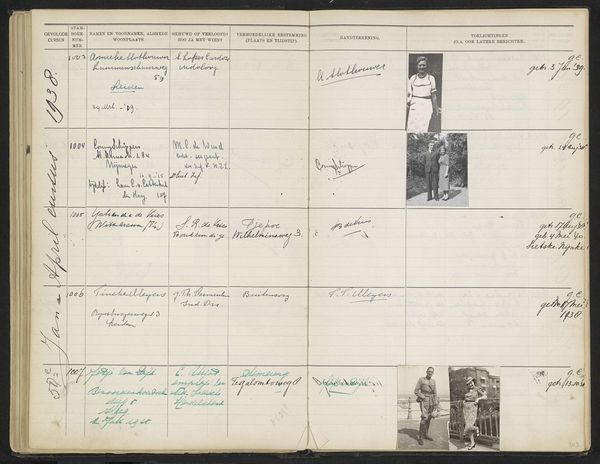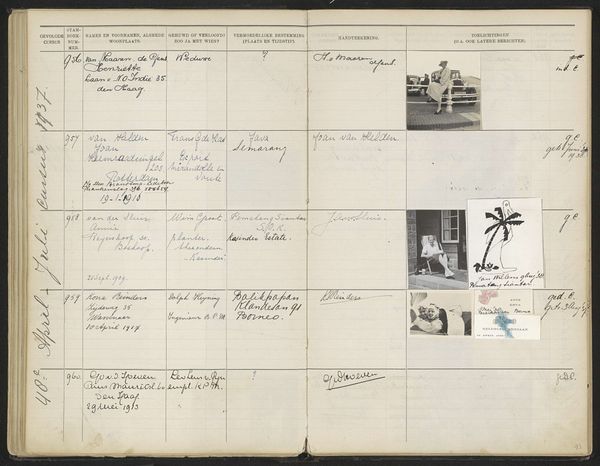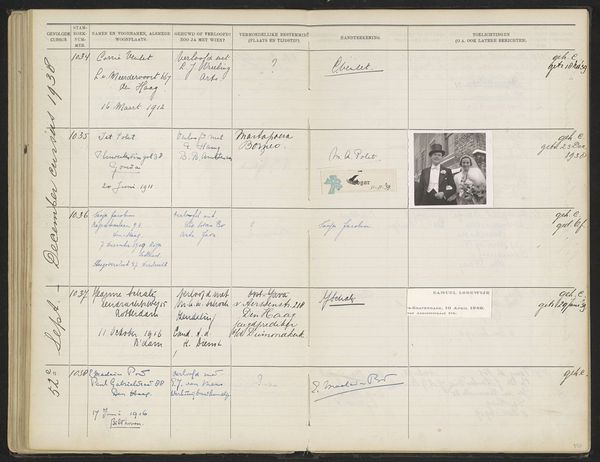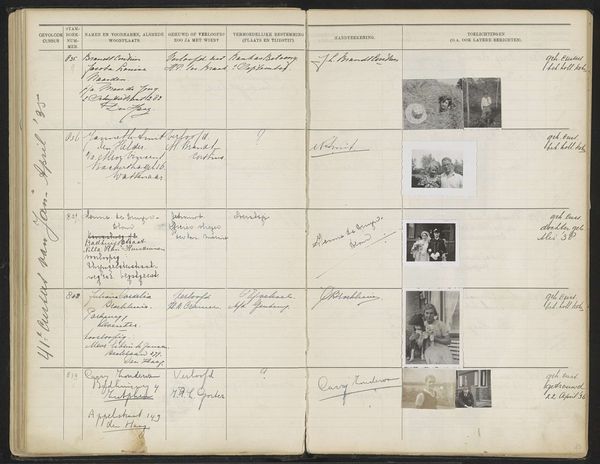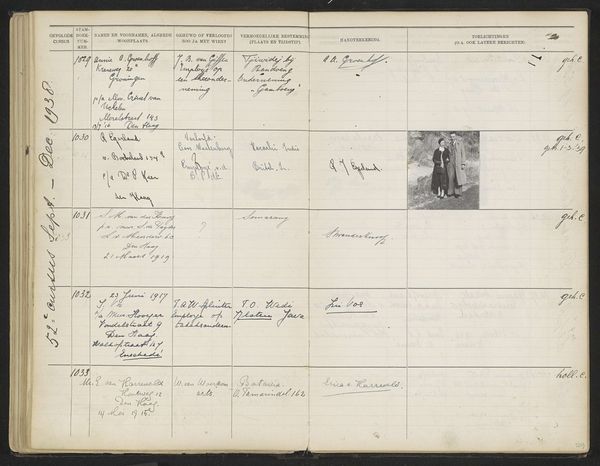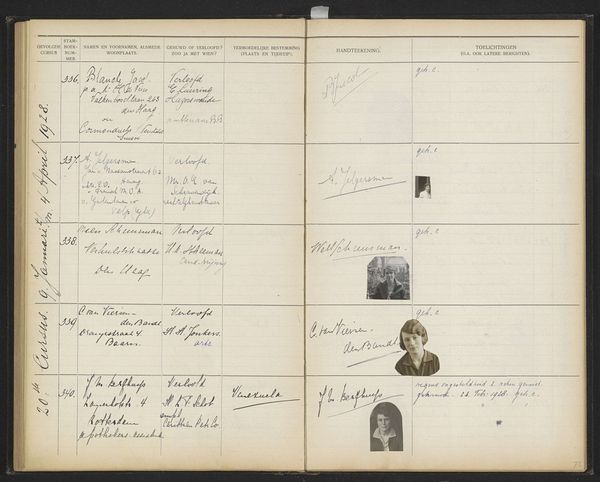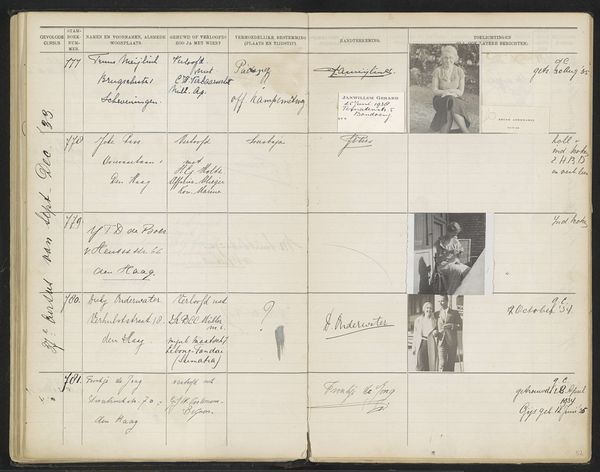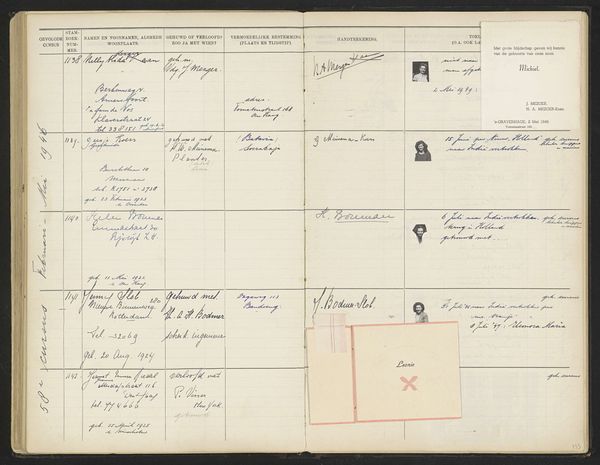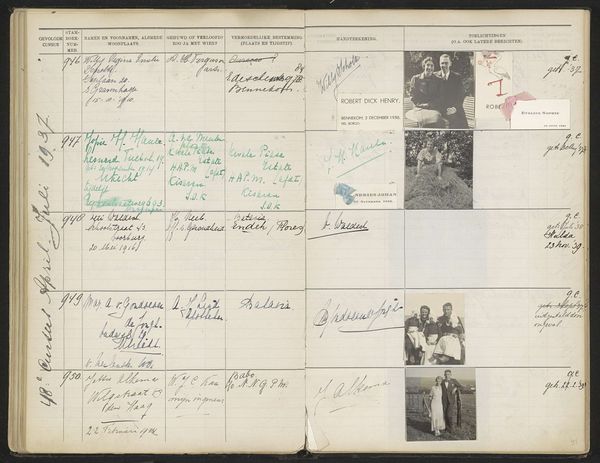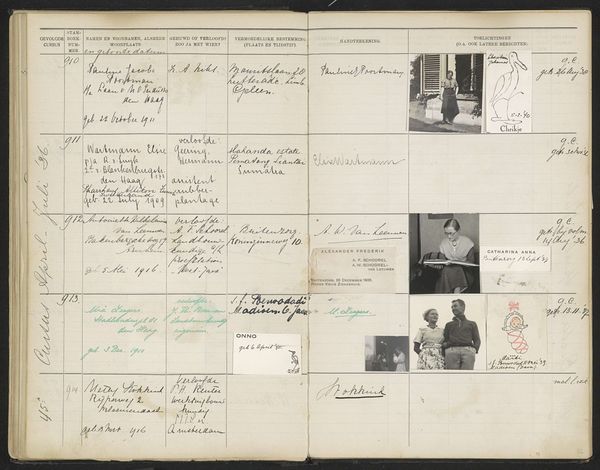
Blad 134 uit Stamboek van de leerlingen der Koloniale School voor Meisjes en Vrouwen te 's-Gravenhage deel II (1930-1949) Possibly 1946
0:00
0:00
paper, pen
#
portrait
#
aged paper
#
hand-lettering
#
sketch book
#
hand drawn type
#
paper
#
personal sketchbook
#
hand-drawn typeface
#
pen work
#
sketchbook drawing
#
pen
#
storyboard and sketchbook work
#
sketchbook art
Dimensions: height 337 mm, width 435 mm
Copyright: Rijks Museum: Open Domain
Curator: Here we have what is listed as “Blad 134 uit Stamboek van de leerlingen der Koloniale School voor Meisjes en Vrouwen te 's-Gravenhage deel II (1930-1949),” created around 1946, we believe. The artist is unknown. It’s a page from a student registry book from a Colonial School, rendered in pen on paper. Editor: My first thought is how intimate and personal this document feels, even though it’s bureaucratic in nature. The meticulous handwriting and the inserted photographs give it a distinctly human touch. Curator: Absolutely. This isn't just a list of names; it represents individual stories intertwined with the history of Dutch colonialism. The book’s existence speaks to the role of women in colonial administration and education during that period. The portraits become fascinating keys to individual stories shaped by historical circumstances. Editor: The composition, however, interests me less for narrative, more for the structured interplay of text and image. The grid format creates a fascinating tension between uniformity and individuality. Each entry adheres to the same template, but the handwriting and affixed photos offer subtle variations. The placement of images—some formal portraits, others casual snapshots—introduces a visual rhythm that keeps the eye engaged. Curator: It prompts us to consider how these young women were being prepared to participate in, and perhaps perpetuate, colonial systems. Who were they? What were their hopes? What role did the colonial school play in shaping their identities? Looking at the pelican drawing with the text below it—"Oe lie's an Ellie”—I can't help wondering what that represents in terms of the students’ lives. Editor: I agree. Focusing solely on these portraits, I see both a formal elegance and an almost whimsical quality. Note the contrasting tonality and varying perspectives among photographs to handwritten records, along with unique character marks in individual handwriting. The interplay captures fleeting moments from lives long past that feel remarkably present. Curator: Exactly. This colonial school registry entry becomes a lens through which to view questions of identity, gender, and power within a specific historical and colonial context. Editor: Precisely. It demonstrates how form and function work together to not only archive but, perhaps unintentionally, also to express individuality, giving access to voices otherwise hidden.
Comments
No comments
Be the first to comment and join the conversation on the ultimate creative platform.
